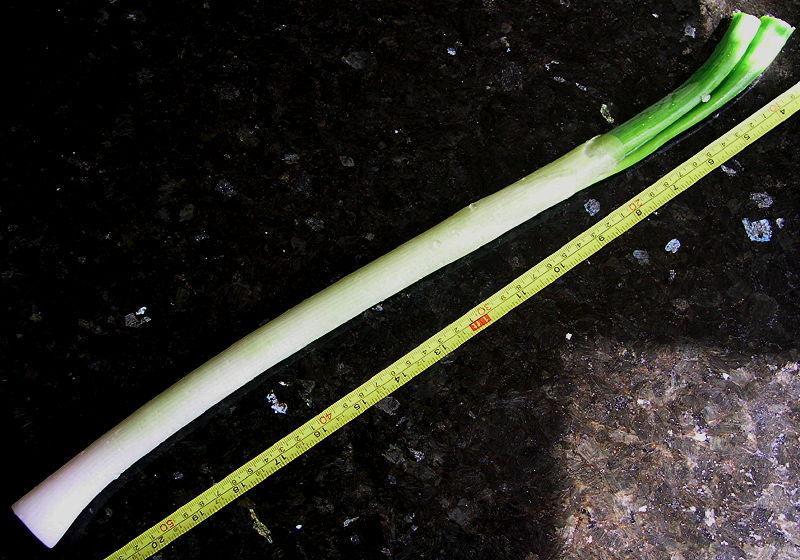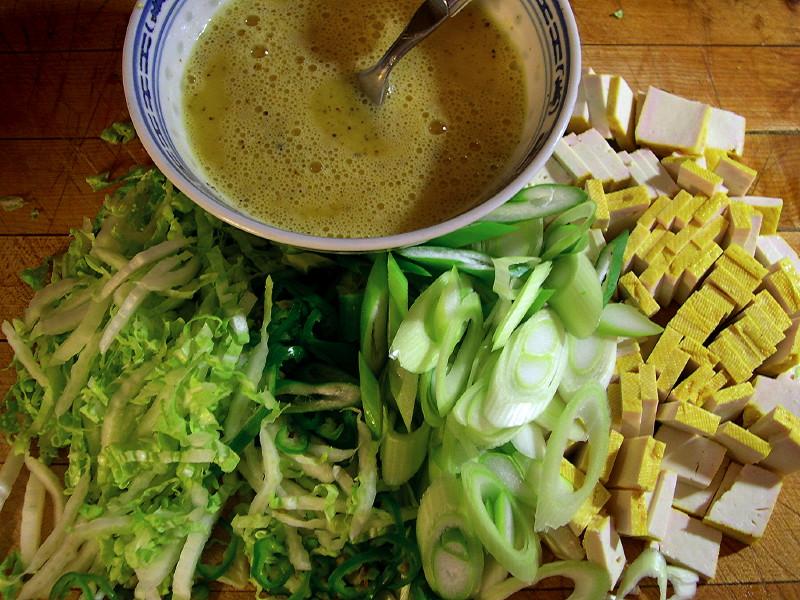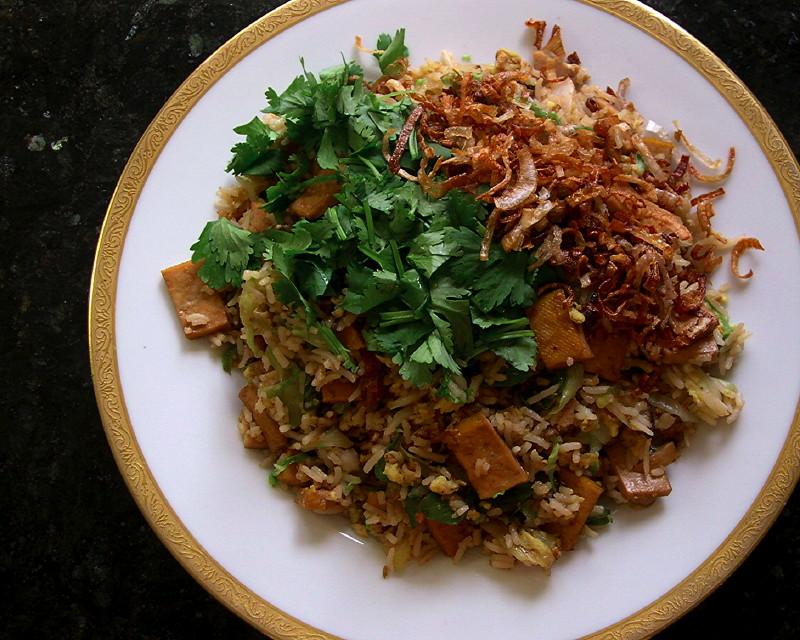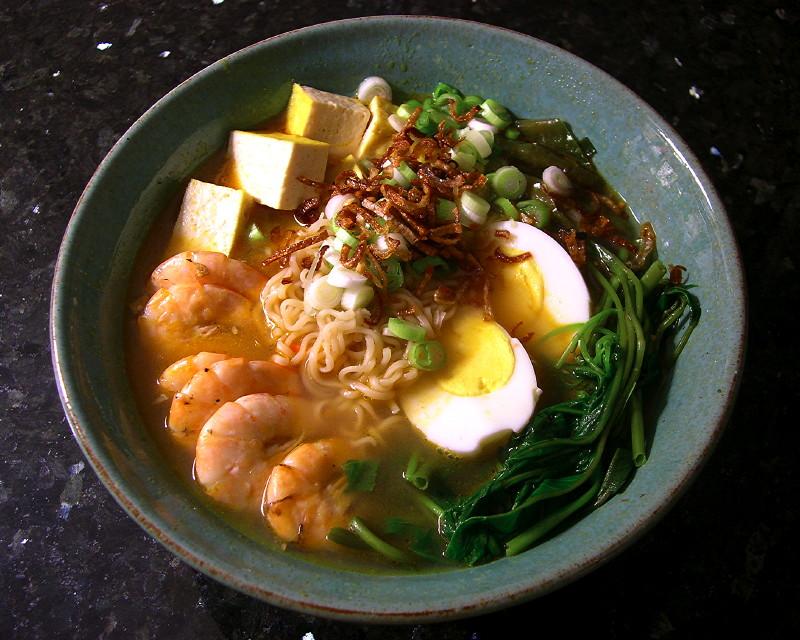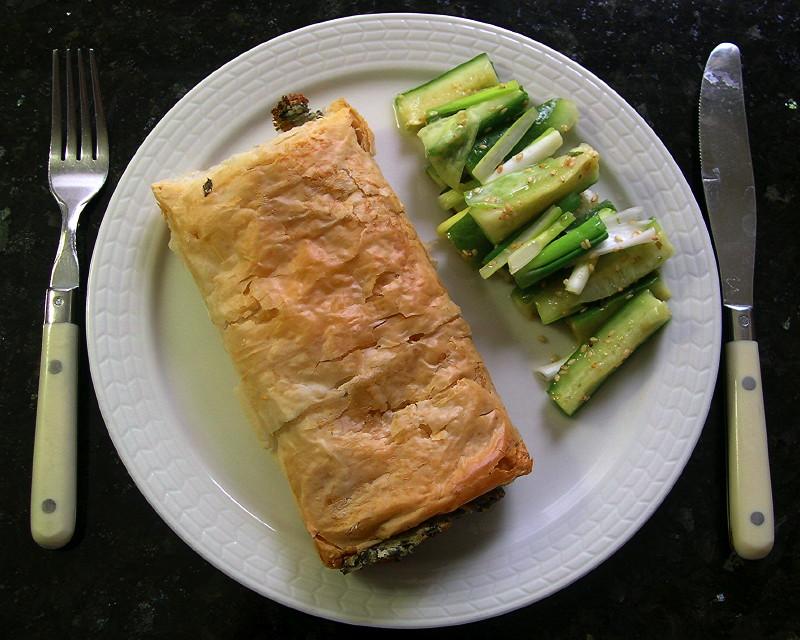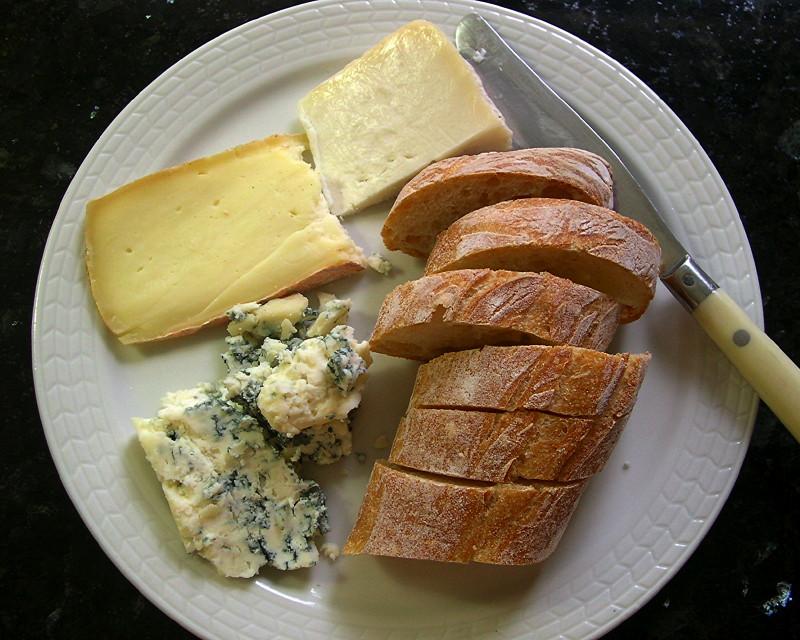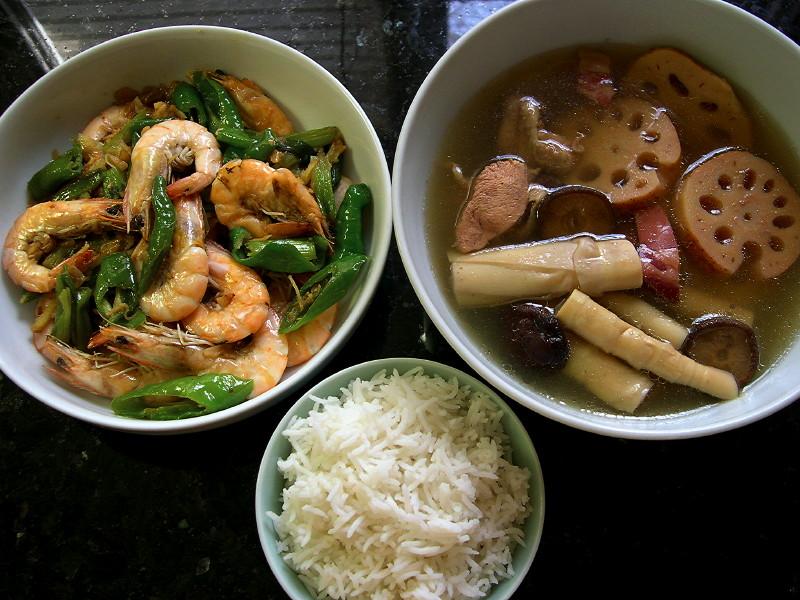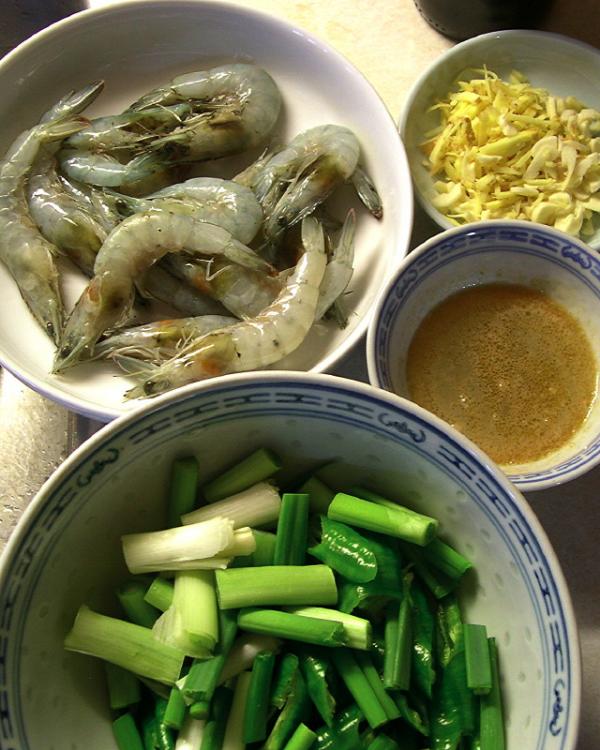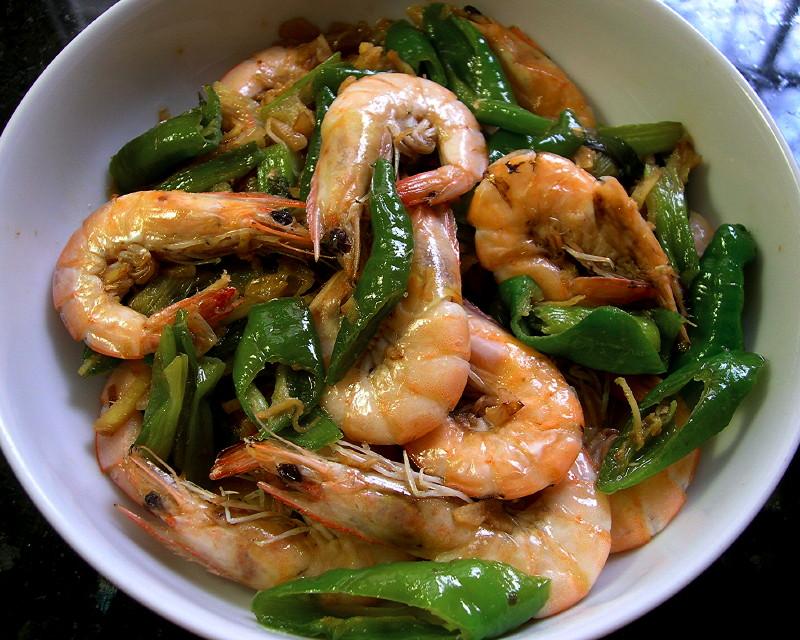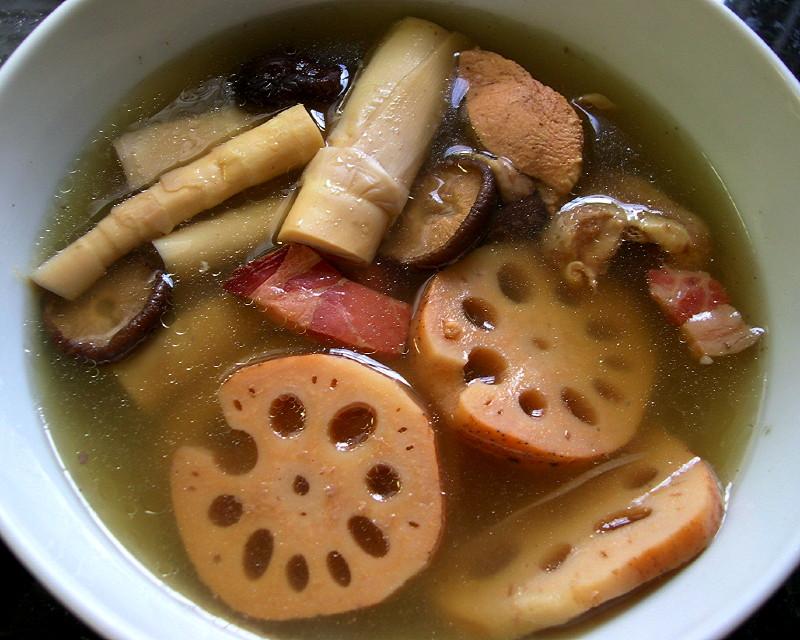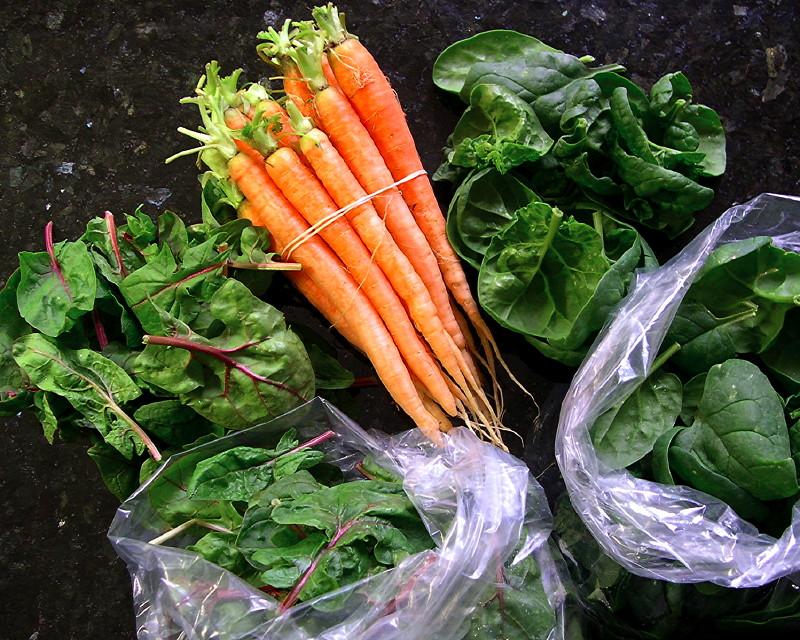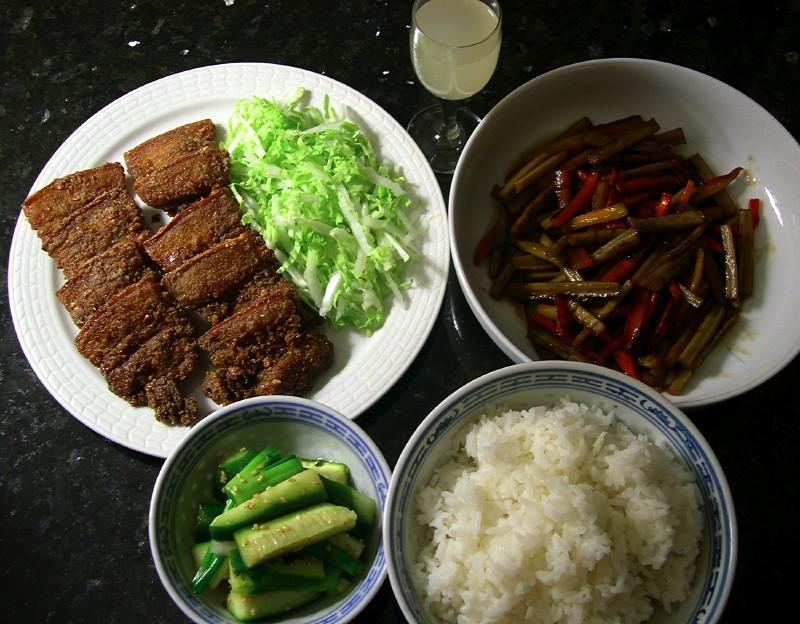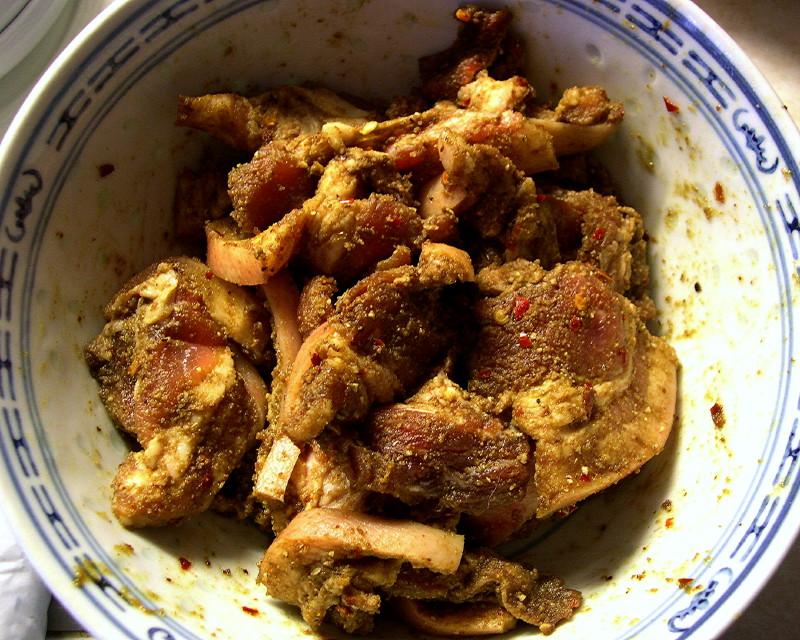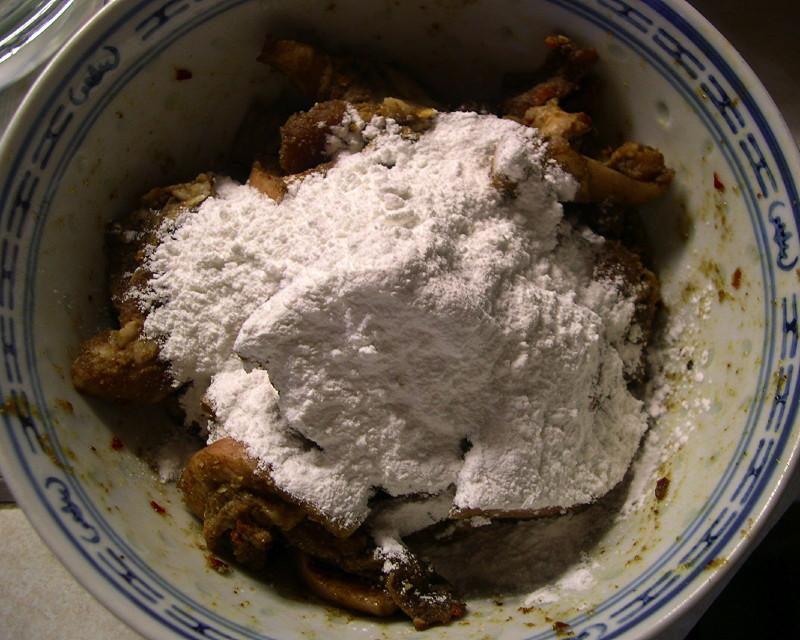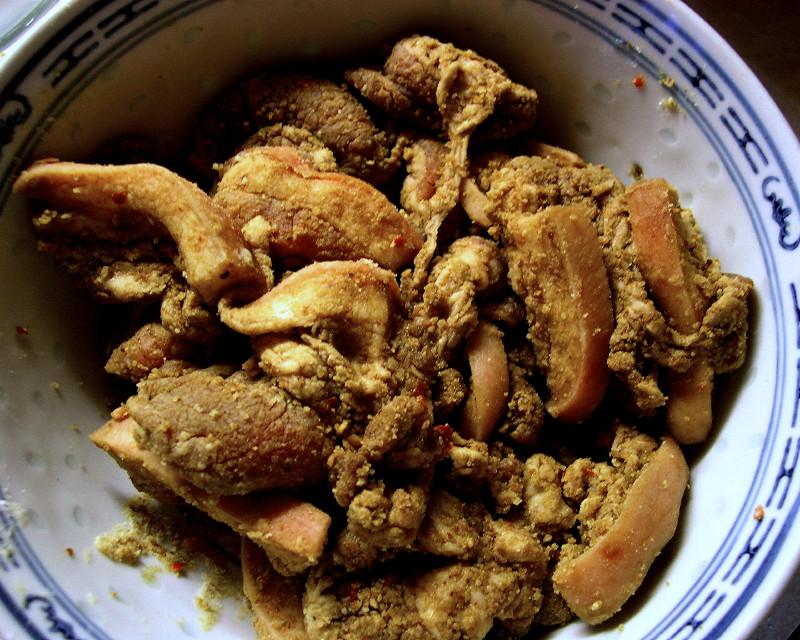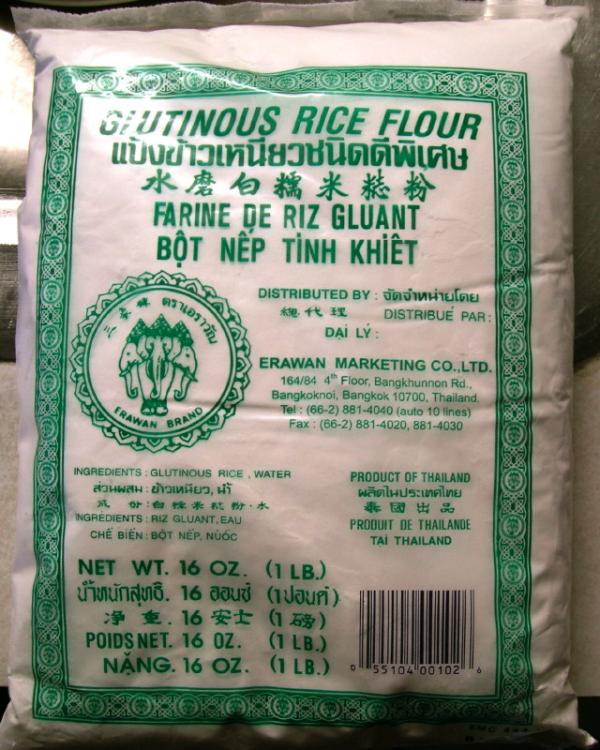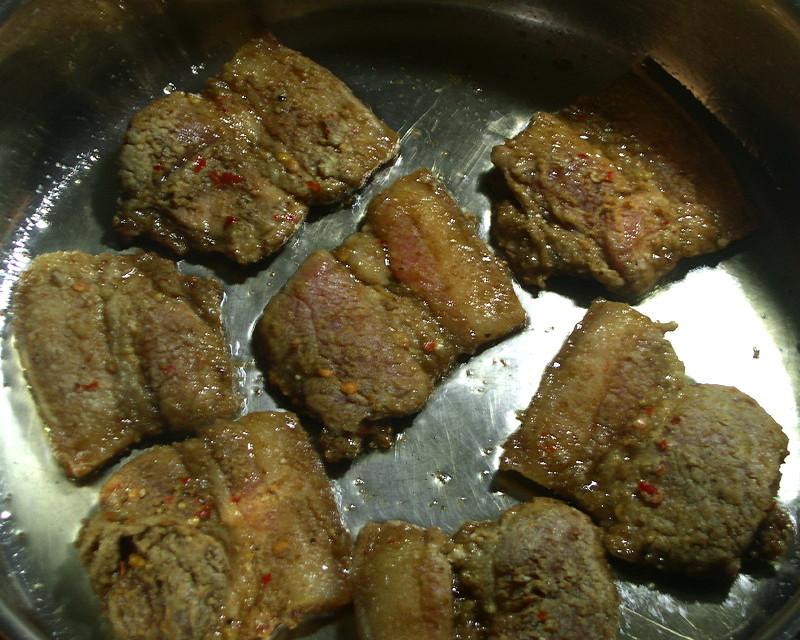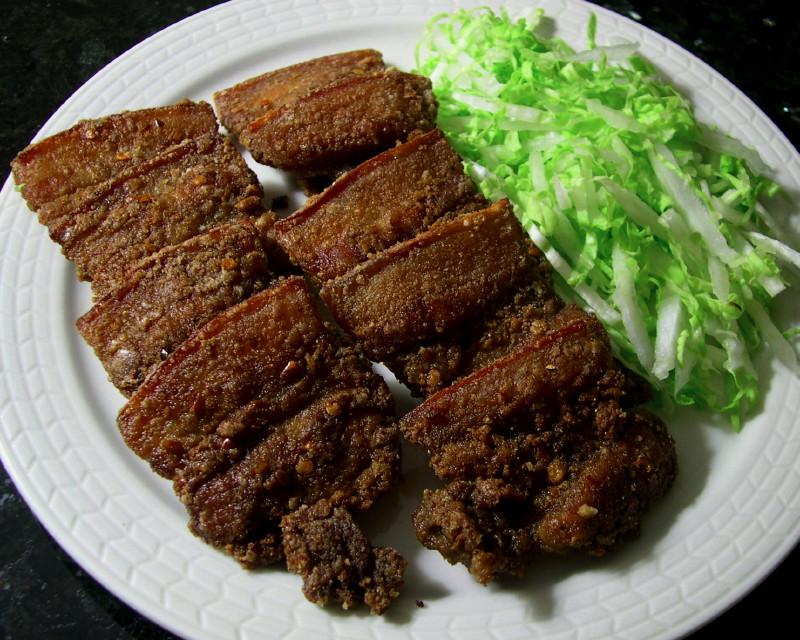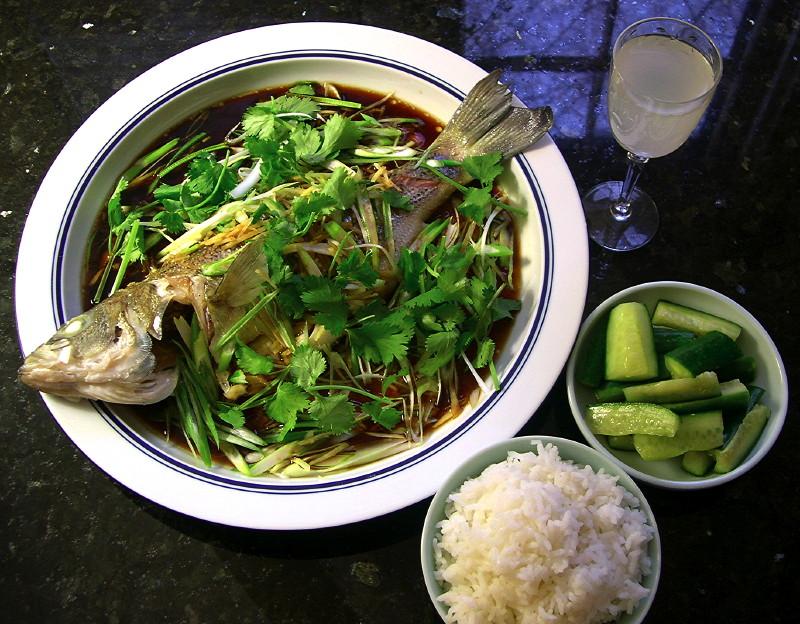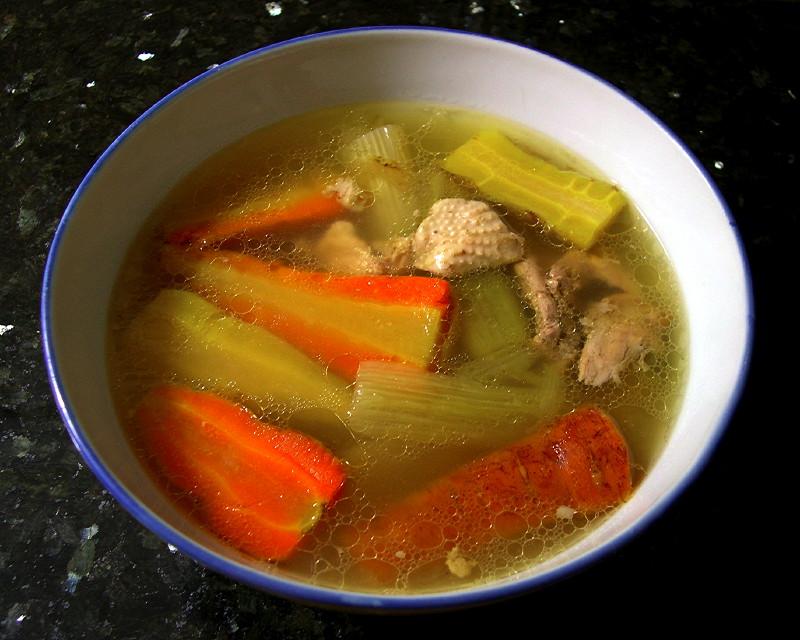-
Posts
3,810 -
Joined
-
Last visited
Content Type
Profiles
Forums
Store
Help Articles
Everything posted by huiray
-
Yes, she did, thanks for the correction. However, she didn't mention the fight over what gravy to serve with it, and the variations that include what is called "Country Fried Steak" and brown gravy.
-
I'm slightly surprised no-one has mentioned Chicken Fried Steak yet, and the sauce that is required to be served with it. In Texas and environs my understanding is that it HAS to be White Sauce, and anything else is grounds for hanging; while in other regions especially where the alternative term "Country Fried Steak" operates a brown gravy is fine, and various permutations including mushroom-based gravies are found including in chi-chi restaurants. There was/is a thread on (cough cough) another food forum where this issue was FIERCELY FOUGHT OUT over what the dish was. :-)
-
Heh. HEH. Could be said of a lot of other folks in other professions (whether food-related or high-tech related) in fields with high Pretentiousness Quotients. My local butcher shop (with old-timers) will do what you want and educate you on traditional cuts too if you ask. I asked them some time ago to "shave" some ribeye into slices with an approximate thickness of xxx (and I explained to them I was going to use it for Phở, which the person there I was dealing with had not heard of but he was listening to me) and he went right ahead and did it for me. Subsequent visits resulted in not-an-eyebrow-being-batted fulfillment of my request(s), and at some point I was even offered some previously-shaved ribeye which they had not done before but which was now being offered for Philly-style cheesesteak preps. :-)
-
Quite a few of the comments on the seriouseats article also talk about how they "followed his instructions" and (yet) SIMMERED their stocks, as they had been trained to do (in the French manner) then wondered why they weren't getting the thickened/milky stocks he described. The author had to gently point out that they needed to BOIL their bones, and that simmering their bones was NOT what was needed.
-
Yesterday's lunch - Fried Rice. Cut-up yellow tofu stir-fried w/ garlic in peanut oil & "Luscious Soy Paste" [Kimlan]. Reserved. Sliced-up Napa cabbage, hot long green chillies, large-type green onion ("tai chung"/negi) tossed around in a hot pan w/ chopped smashed garlic in vegetable oil. Three eggs (beaten w/ ground black pepper, some vegetable oil & some water) poured in, allowed to set a bit. Stuff tossed scrambled around. Two-day-old Basmati rice added in. The reserved tofu slices went back in. Tossed around w/ spatula till done. Plated w/ deep-fried shallots & coriander leaves.
-
Leftover stir-fried shrimp & hot long green chilli pieces; water spinach (ong choy) blanched in oiled boiling water; halved hard-boiled farm egg; Instant Noodles Artificial Hot & Sour Shrimp Flavor [Dragonfly]; yellow tofu simmered along w/ the soup; chopped scallions & deep-fried sliced shallots.
-
Indiana: Breaded Pork Tenderloin Sandwich. Perennial fight with Iowa over dibs on this. Here's one blog on this sandwich: http://breadedtenderloin.wordpress.com/
-
The "whiteness" is NOT from gelatin itself. It is due to the other stuff and fine particulates that get carried into the soup. Gelatin itself will be "clear"/colorless in water. I don't believe I see a comment about gelatin by itself causing the milkiness in the stocks in the seriouseats article. Think of Jell-O ... which is gelatin-based: One gets clear gelled desserts, yes? I also edited my previous comment, just before I saw this last post of yours - have a look, if you wish. There WILL be a layer of fat in tonkatsu ramen stocks after preparing it, assuming there was appreciable fat on the bones to start with (which should be the kind of bones used) and one DOES skim off all or part of it as one wishes. My pork stocks show this, whether I made them in the "milky form" or as the "relatively clear form". Seolleongtang stock/soup may or may not form a thick fat layer, depending on the type of bones being used and how much fatty tissue there is on the bones - see below. Seolleongtang soup also uses BEEF or oxtail bones, which generally have much less fat than pork bones used for ramen stock, although when I make my Phở stock from relatively fat-free (but not absent) beef bones I have always got a fair bit of fat on top. Remember that seolleongtang stock/soup and tonkatsu ramen/pork stock/soup have milkiness in common, but are not identical soups. You asked about/cited ramen soups, in addition to the seolleongtang soup you had, in your original post - hence the reason for the inclusion of pork/ramen stocks/soups in my posts. One aspect of the preceding discussions was about how much fat was trapped as a suspension/dispersion in the milky broth, in addition to other particulates or finely dispersed large molecules which serve to refract light (making it appear milky). Is your "soup in the fridge" something you are making yourself; or is it the same "leftover seolleongtang soup" from the restaurant you talked about in your original post? If the latter, the folks at the restaurant must have already skimmed off the fat, and also seolleongtang soup is usually made more dilute than the stock/soup for Tonkatsu ramen - see my added comments in my previous post. If it is soup you are making yourself, was there sufficient fat on your bones to generate an appreciable amount of rendered fat? How much collagen and connective tissue is there? What sort of bones are they? Big shin bones stripped of the "caps" and connective tissue (including the caps between bones) and tendons and also stripped of all fatty tissue around and on the bones will not give you either enough fat or gelatin to form the sort of stock being discussed here. Marrow alone will not render enough fat to give a thick layer (or even any continuous layer) of fat on top, unless you used a lot of fat-layer-free bones with lots and lots of marrow, and the marrow has to be the fatty kind, not the blood-cell-producing kind.
-
Perhaps because your soup is still in the pot and is still boiling? :-) The stock (with the gelatin in it) needs to be cooled down for it to solidify. The seriouseats author *said* he chilled the samples of the stock he took out - re-read the first sentence in the "A Matter of Time" section which you seem to have looked at: ETA: Ah, I see you edited your previous post to state you chilled (a portion?) of your soup/stock but did not get it to gel. Perhaps you haven't got enough gelatin in yet or maybe you have a lot of water? (a greatly diluted solution of gelatin will not gel - just like jello won't solidify if it is too dilute) Also: when making Tonkatsu stock one does indeed use a lot of bones and minimal water, precisely because one wants to get that heavy, very unctuous, concentrated gelatin stock. The seriouseats author also used largely pig trotters which contain a LOT of gelatin collagen, and did his stock-making in a relatively small volume of water - look at this photo in his article: http://www.seriouseats.com/images/20120227-tonkotsu-ramen-broth-pork-fat-02.jpg
-
I don't know, but your suggestions sound plausible on the face of it. I would suspect that making a vinaigrette might be similar to the "adding fat to water and putting the mixture in a blender" scenario? ETA: Presumably when the stock is being boiled there would also be a higher rate of denaturation of the proteins and also a greater mechanical dispersion of the denatured (particulate) proteins, amongst whatever else is entering the stock, and that would then get suspended in the soup, "aided/trapped" by the gelatin (according to the seriouseats author's theory)? As for this theory, it seems to me to have some merit - gelatin *is* used as an emulsifier (amongst other things) in both food and other situations - e.g. in photography to form the silver halide suspension on film. In a related sense, polymers like PVP (polyvinylpyrrolidone), are used to aid in the formation of stable dispersions/suspensions of things like very fine latex particles... [Gelatin is a heterogenous mixture of polypeptides all containing a significant proportion of proline (see, e.g., this reference amongst any number of others) and hydroxyproline residues; PVP is comprised of repeating units of what essentially resembles the cyclic moiety of proline (see, e.g., the Wiki article as a convenient jumping-off point)]
-
Perhaps you might read the seriouseats article again. Here is what the author said in the second paragraph of the "Bones to Pick" section: As for the "adding more fat in" thing, that falls under what I said was "..and then some!" for you - re-read the "Back to Fat" section in the seriouseats article again. The author proposes a theory of the gelatin trapping the fine particulates (and, I would say, some of the fat as well, if the theory holds) to give the milky stock. In the absence of an actual full chemical analysis of the milky stock I would assume that there is at least some fat remaining in it. If you are concerned about consuming any fat at all then you might consider that the "safe" thing to do would be to throw out that leftover seolleongtang soup? Does anyone have a citation or two for actual chemical analyses of said milky stocks?
-
When I make pork stock using shin bones, neck bones, etc (with some meat still on them and cartilage and fat aplenty) I've done it both ways - at a bare simmer, and at a moderate boil. The simmered-only one does not turn milky. The boiled one does.
-
I somehow suspect you may have never made ramen stock or seolleongtang stock, which is what the OP is asking about? (I might have thought these soups might have been sampled by you when you were living/working in SE Asia?) Or other E Asian soups? To make the characteristic milky white stock for Ramen stock or Tonkatsu stock or (Ox) Bone Soup (Seolleongtang) you do indeed BOIL the bones. One need not do it on full flame or on full/maximum heat, but the cooking of the stock is done at a level much greater than a mere simmer. You mention disapprovingly the effect of boiling the stock which is that the stock turns milky - but that is PRECISELY the desired effect in making ramen and seolleongtang stocks. The milkiness would also be due to more than just emulsified fat. See these two articles as two examples for descriptions of the technique: http://www.seriouseats.com/2012/02/how-to-make-tonkotsu-ramen-broth-at-home-recipe.html http://www.koreanbapsang.com/2013/02/seolleongtang-beef-bone-soup.html#.Uy_ibdGXRr8 BTW, what the "Food Lab" author says about blanching the bones to get rid of the blood that discolored his initial stock attempts is a very old technique which is normally used by cooks and chefs both professional and at home in making Chinese/E Asia/SE Asian stocks - a technique called "Fei Sui" (飛水; Yale: fei1 seui2) ("Flying water") in Cantonese. To the OP: Do have a look at the seriouseats link above - it should answer your questions and then some! (e.g. purposely add "tenderized" fat into your ramen broth for even more unctuousness)
-
Aw shucks, scubadoo. Thanks. ---------------------- Lunch yesterday: • Spanokopita [Grecian Garden, Indy City Market] with scallion & cucumber pickles. • Toscana [Sapori Italia], Taleggio [Ciresa], Salemville Blue cheeses [last two from Goose the Market]; fresh baguette. ---------------------- Lunch today: • Fresh White Pacific shrimp [Bedrock Springs Seafood Farm] stir-fried w/ garlic, ginger, scallions, hot long green chillies, & a savory sauce.¶ • Lotus root & bamboo shoot soup.§ • White rice (Basmati). ¶A mixture of (hon) mirin [Takara], "Aged Gourmet Rice Vinegar" (陳年酢) [Kong Yen], several dashes of black sesame oil, chicken stock. §Thickly-sliced scrubbed fresh lotus root, bamboo shoots [First World Brand] blanched for a few minutes then drained & cut up, rehydrated de-stemmed small dried Chinese mushrooms (tung koo), the mushroom soaking water, cut-up skin-on chicken breast, a 1/3 inch thick slice of Jamón Serrano cut up into chunks, water, Himalayan salt. The Jamón Serrano served as a substitute for Jinhua Ham. The stuff for the shrimp dish: Additional pics:
-
Thanks, mm84321. I too have never used this pepper. After rummaging around the web looking it up I went ahead and ordered some. :-)
-
Not really. I used it because the recipe called for it. It has been said elsewhere that it "binds" better and is more flexible... The resulting fried coating is crispy enough and does seem slightly flexible but that may be my imagination. I suspect regular rice flour would work also, hmm, worth a try. I used the ground coriander (which is not in the original recipe) to give a sweet note.
-
Today: Indy Winter Farmers' Market & City Market: Teeny carrots (first of the year), baby spinach (red-stemmed & normal); 'Toscana' cheese; Spanokopita. Goose the Market: Local shrimp (Pacific white shrimp; from a shrimp farm in Crawfordsville); Taleggio cheese (Ciresa), Salemville Blue cheese, Jamon Serrano (two think-ish slices; as substitutes for Jinhua ham for some soups to be made later), a nice baguette. From a local grocery: Fresh limeade, collard greens, green cabbage. From 2 days ago: Asia Mart: Instant Noodle King (Thin) Wonton Soup Flavored (1 case) [sau Tao], Instant Noodle King (Thin) Lobster Soup Flavored (1 case) [sau Tao]; rice flour, glutinous rice flour, wonton wrapper (thin) Shanghai-style, fish meat emulsion (paste) [Venus], vegetarian spring rolls, a bottle/jar of baechu kimchi, soft tofu & firm tofu [Hinoichi], yellow tofu [Phoenix], Ti Guan Yin oolong tea, red Szechuan peppercorns, green Szechuan peppercorns, raw peanuts; daikon, burdock root, green onion/scallion (6 bunches), coriander leaves (3 bunches), Japanese cucumbers, jicama, fresh Chinese far koo mushrooms, Chinese yellow chives, water spinach (ong choy), lotus roots, Yu Choy Sum, Chinese celery, (all vegetables fresh); frozen (and thawed) shrimp; pork belly slices, whole beef shins, ground pork, big mouth bass (fished from the tank and bopped on the head and gutted there); jozo mirin [Morita], Thai Hom Mali rice [Golden Elephant].
-
Nice, SobaAddict. Will you be updating your USGM thread on the NY board as well?
-
Dinner last night: • Pan-fried spicy pork belly slices. (see here in the pork belly cook-off for more details) • Kinpira gobo.¶ • Pickled (sweet/sour) scallions & Japanese cucumbers w/ toasted sesame seeds. • White rice (Hom Mali). • Chilled Rihaku Tokubetsu Junmai ‘Dreamy Clouds’ Nigori Sake. ¶This version: Burdock root, well-scrubbed, sliced into sticks, soaked in water for 5-10 minutes, drained. Repeat. Small heirloom carrots (red & orange), scrubbed, sliced into sticks. Pan-fried w/ peanut oil (burdock root went in first then tossed for a while (w/ a bit of water after a bit then fried back to "dryness") before the carrots went in), ryuri-shu, jozo mirin, Kikkoman soy sauce; tossed for a bit; water added, pan covered & simmered back down; cover removed & mixture tossed around till "dry" and stuff was glazed.
-
Pan-fried spicy pork belly slices. Adapted from this recipe. (Google translation) Pork belly slices, about 1/3 inch thick, tossed with ground cumin (quite a bit), ground coriander (some), ground dried hot red chilli powder, red chilli flakes & seeds (hot), several good dashes of light soy sauce, several good pours of Szechuan pepper oil {花椒油; (Rapeseed oil + Szechuan pepper (prickly ash) oil)} [spicy King], a bit of salt. This was left (covered) in the fridge for 1-2 days. Pic after "fluffing up" the mixture: Warmed back up to room temperature. Glutinous rice flour added and everything tossed together (by hand; then with wet hands). The glutinous rice flour used: Pan-fried (on both sides) using canola oil. Drained on paper towels. Plated with raw sliced Napa cabbage. Eaten w/ cucumber+scallion pickles, kinpira gobo, white rice. See the Dinner! thread.
-
Breakfast today: • Steamed fresh big-mouth bass.§ Dressed w/ hot oil; scallions, julienned ginger, coriander leaves; & a warm soy sauce mixture.¶ • Lightly pickled Japanese cucumbers. • White rice (Hom Mali). • Chilled Rihaku Tokubetsu Junmai ‘Dreamy Clouds’ Nigori Sake. § Marinated w/ ryori-shu [Morita], mirin [Takara], sea salt, crushed scallions, sliced ginger, canola oil. Steamed in the marinade. Fish only removed (discarding all marinating/steaming liquids & flavoring solids) and plated. ¶Dressed with fresh sliced scallions, julienned ginger. Hot canola oil poured all over the fish. A mixture of light soy sauce [Higeta Honzen], water, mirin [Takara], rice wine [Gold Plum Premier Matured Nuerhong], a bit of black sesame oil, and some fresh ground white pepper was heated in the same pan used to heat the oil. The sauce, once hot, was poured all over the fish and scallions & ginger. Cilantro leaves and stems were then scattered over everything.
-
Anna N, There is no reason to be skittish about canned mushrooms, in my view - and eG purists can fulminate all they want. (Smile, folks) I use them myself without any injury to my senses or person or idea of self. :-) I definitely have them in my pantry. I think they're just fine for what they are and for the occasions that call for them, whether as straw mushrooms in a convenient form, or standard mushrooms or whatnot. In fact, the taste of canned or bottled (OK those may be better) standard mushrooms in a dish or even by themselves (e.g. when pickled) are treated by me as a "separate taste" from blazingly fresh mushrooms which some may aver are all that they allow to cross their lips. ;-) :-) My two cents. p.s. Why wash them so hard? They won't become "fresh mushrooms" by washing them, they just are. :-)
-
Paul Bacino, thanks for the nice compliment.
-
Ann_T, I remember you mentioned before that you might try giving Moe soft-boiled eggs like in Anna N's post ... have you tried giving them to him "in a bowl" like as shown in this post? Just curious. :-) (I also remember your saying, even earlier, that Moe would probably not be averse to "drinking them" if he didn't like dunking his toast fingers in them)
-
Chicken broth with carrots (red, yellow, orange) and celery; eaten w/ pieces of the fatty skin, a bit of the chicken meat, & min sin (mee sua) for breakfast today. The broth and etc alone was eaten as a simple dinner the previous night. Pic is of the bowl of broth + stuff from dinner.



